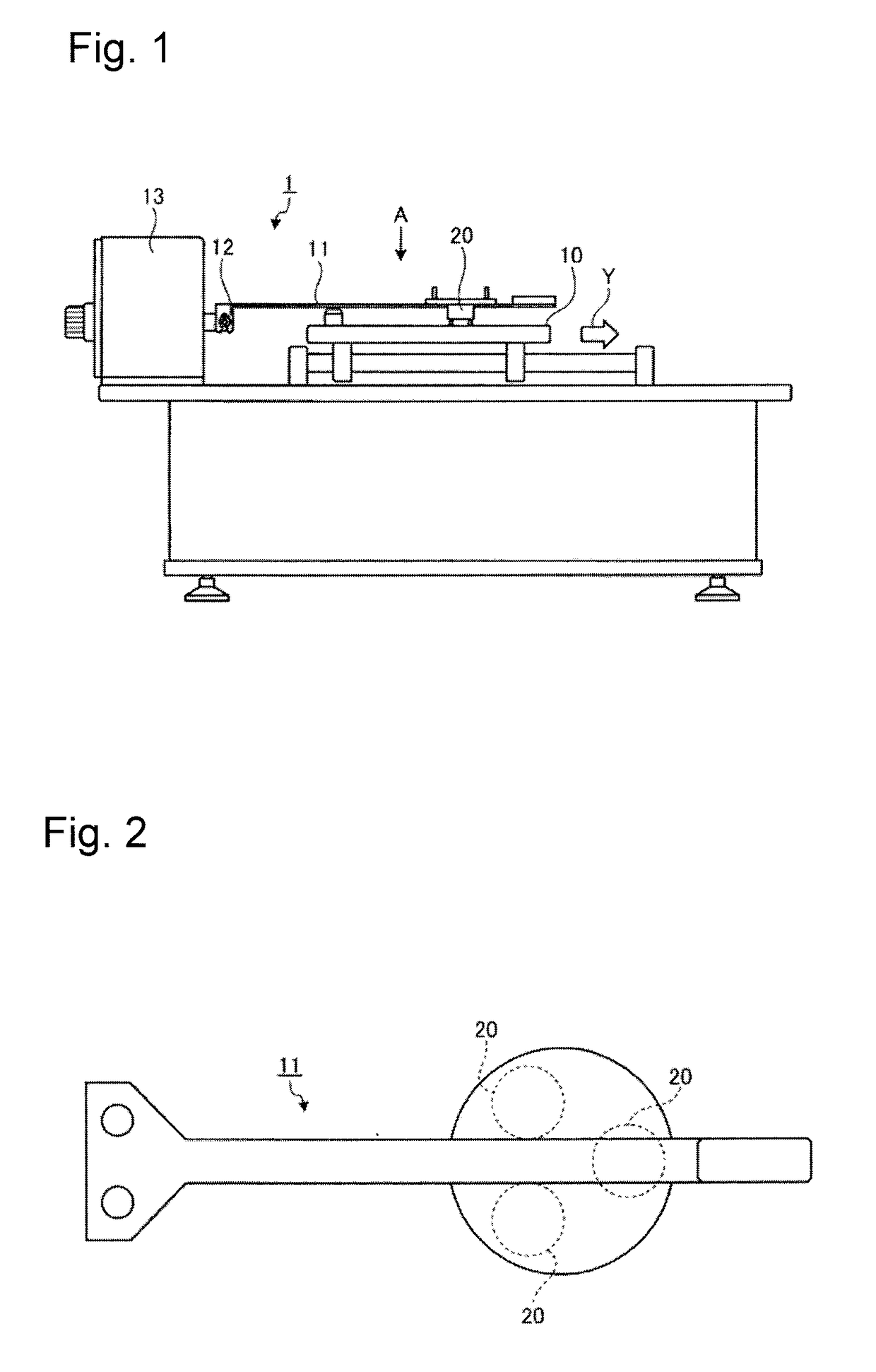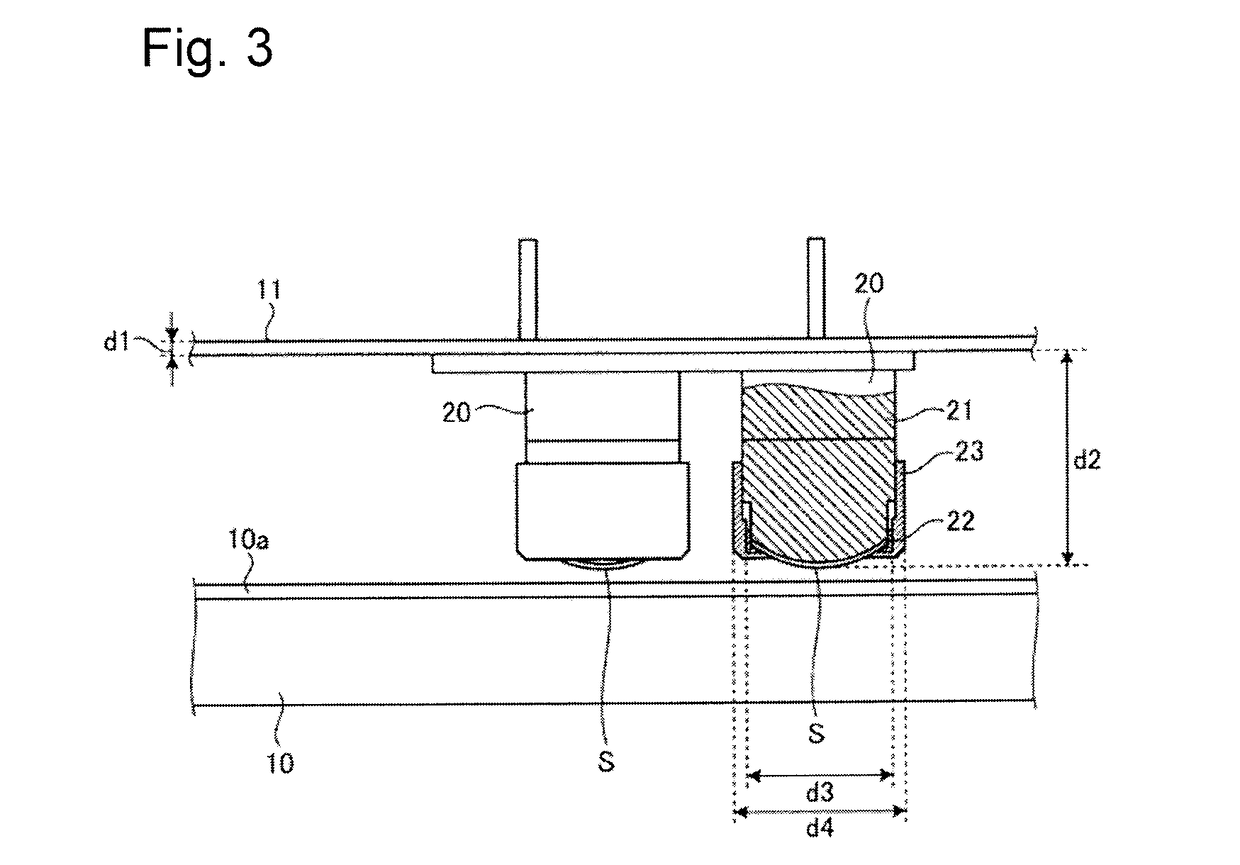Medical device and method for producing the same
a technology of medical devices and contact lenses, which is applied in the field of medical devices, can solve the problems of increased risk of bacteria growth, increased risk of water vaporization from contact lenses, and certain fixed proportions of contact lens wearers feeling dry more strongly, so as to reduce or avoid adhesion the effect of reducing or avoiding the phenomenon of adhesion and excellent lubricity and wettability
- Summary
- Abstract
- Description
- Claims
- Application Information
AI Technical Summary
Benefits of technology
Problems solved by technology
Method used
Image
Examples
reference example 1
[0220]Polydimethylsiloxane having a methacryloyl group at one end (FM0705, CHISSO CORPORATION, mass average molecular weight of 930, number average molecular weight of 769) (5 parts by mass), as a component M, represented by the following formula (M2):
[0221]
polydimethylsiloxane having a methacryloyl group at both ends (FM7726, CHISSO CORPORATION, mass average molecular weight of 29 kD, number average molecular weight of 26 kD) (45 parts by mass), as a component A, represented by the following formula (A2):
[0222]
trifluoroethyl acrylate (Viscoat 3F, Osaka Organic Chemical Industry Ltd.) (45 parts by mass) as a component B, methyl methacrylate (MMA, 0.5 part by mass) as a component Ck, an ultraviolet absorber having a polymerizable group (RUVA-93, Otsuka Chemical Co., Ltd.) (1 part by mass) as a component C, a polymerization initiator “IRGACURE®” 819 (Ciba Specialty Chemicals Inc., 1 part by mass), and t-amyl alcohol (10 parts by mass) were mixed and then stirred.
[0223]The insoluble ma...
reference examples 2 to 12
[0224]In the very same manner as in Reference Example 1, except that the use amounts of the components M, A, and B were changed to amounts shown in Table 1, moldings were obtained. All moldings thus obtained had a water content of less than 1%.
[0225]
TABLE 1ComponentComponentCk AcidCktreatmentComponent MComponent AComponent BComponent CRUVA-93UniBlue APartsPartsPartsParts(Parts(Parts byNameby massNameby massNameby massNameby massby mass)mass)ReferenceFM07055FM772645Viscoat48.5MMA0.51—Example 13FReferenceFM070510FM772640Viscoat48.5MMA0.51—Example 23FReferenceFM070515FM772635Viscoat48.5MMA0.51—Example 33FReferenceFM07115FM772645Viscoat48.5MMA0.51—Example 43FReferenceFM071110FM772640Viscoat48.5MMA0.51—Example 53FReferenceFM071115FM772635Viscoat48.5MMA0.51—Example 63FReferenceFM07215FM772645Viscoat48.5MMA0.51—Example 73FReferenceFM072110FM772640Viscoat48.5MMA0.51—Example 83FReferenceFM072115FM772635Viscoat48.5MMA0.51—Example 93FReferenceFM07255FM772645Viscoat48.5MMA0.51—Example 103FRefer...
reference examples 13 to 14
[0226]In the very same manner as in Example 1, except that the component M is not contained and the use amount of the component A was changed to 50 parts by mass, a molding was obtained as Reference Example 13. All moldings thus obtained had a water content of less than 1%. In the very same manner as in Example 1, except that a branched silicone (TRIS) as a monofunctional monomer was mixed in the composition shown in Table 1 in place of the component M, a molding was obtained as Reference Example 14.
PUM
 Login to View More
Login to View More Abstract
Description
Claims
Application Information
 Login to View More
Login to View More - R&D
- Intellectual Property
- Life Sciences
- Materials
- Tech Scout
- Unparalleled Data Quality
- Higher Quality Content
- 60% Fewer Hallucinations
Browse by: Latest US Patents, China's latest patents, Technical Efficacy Thesaurus, Application Domain, Technology Topic, Popular Technical Reports.
© 2025 PatSnap. All rights reserved.Legal|Privacy policy|Modern Slavery Act Transparency Statement|Sitemap|About US| Contact US: help@patsnap.com



